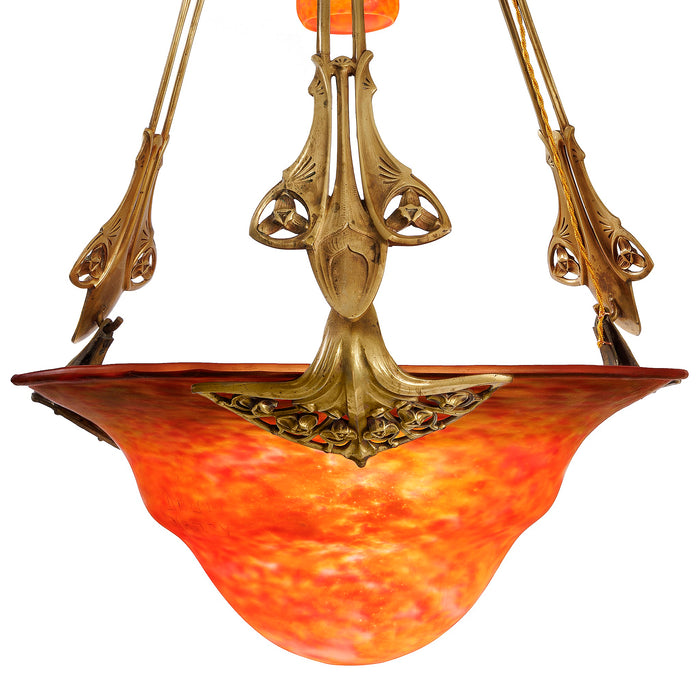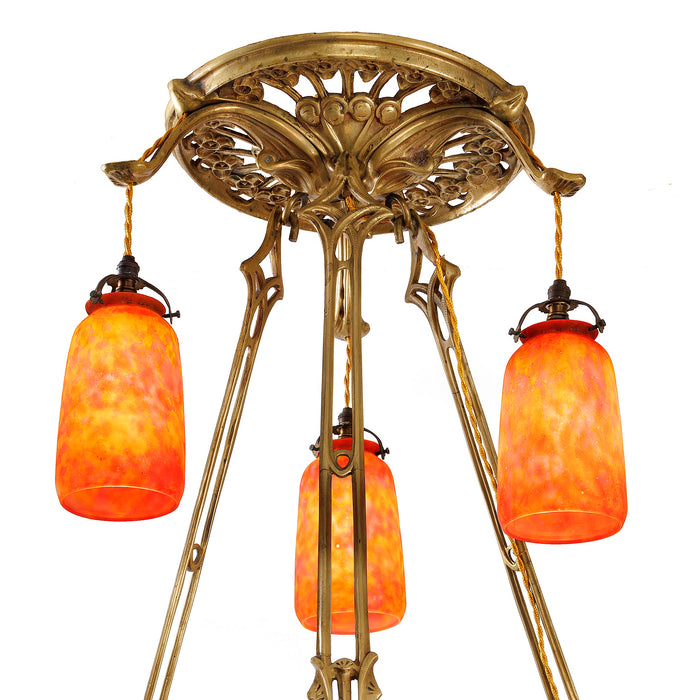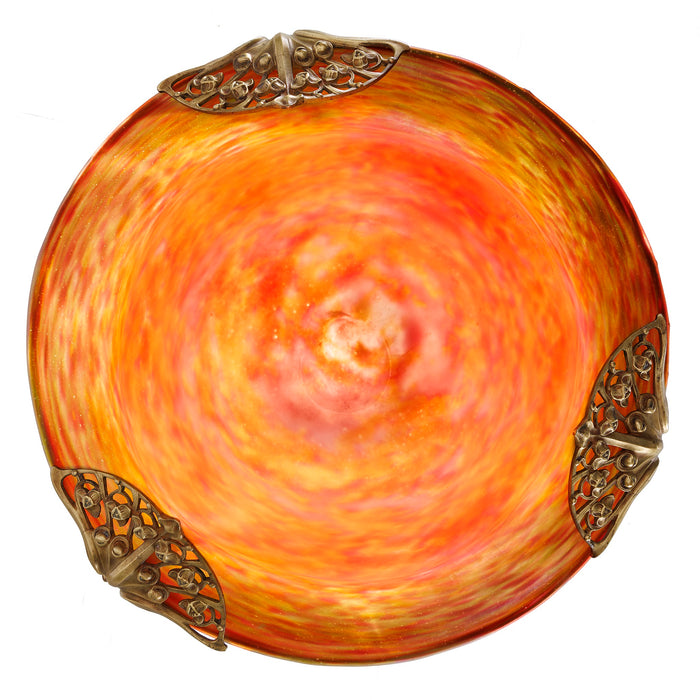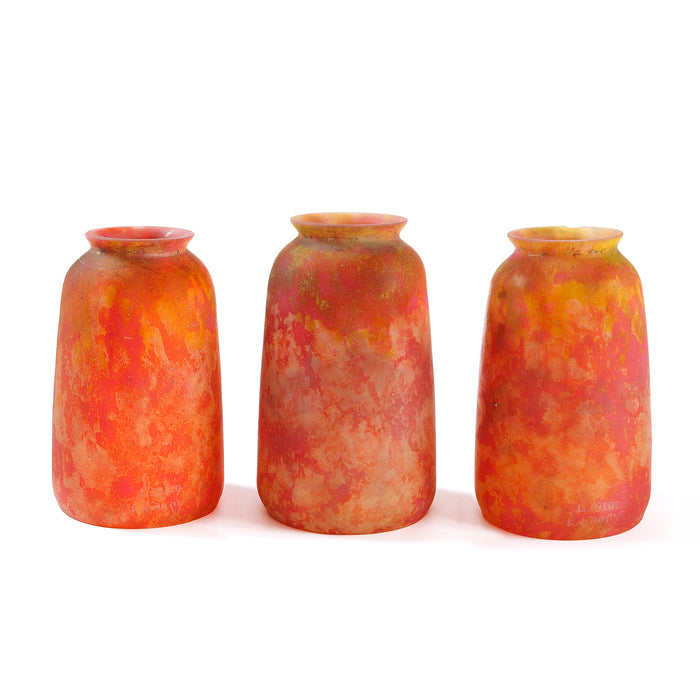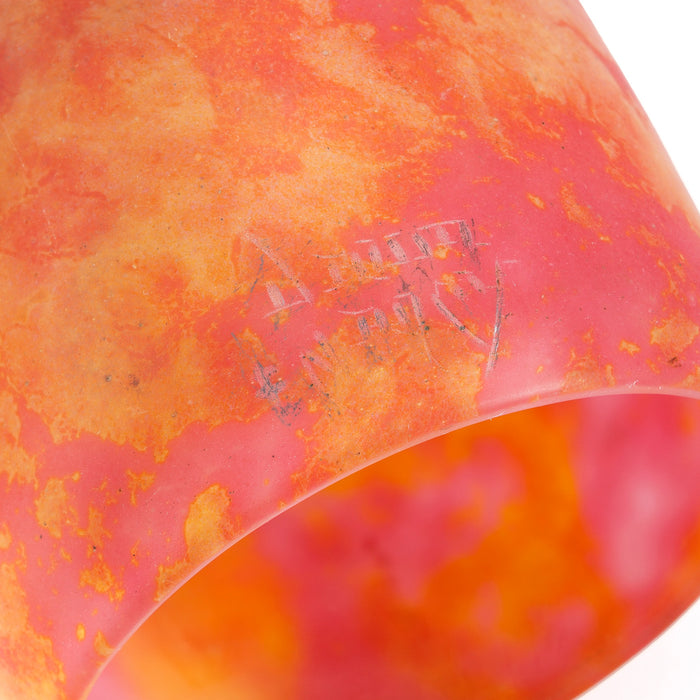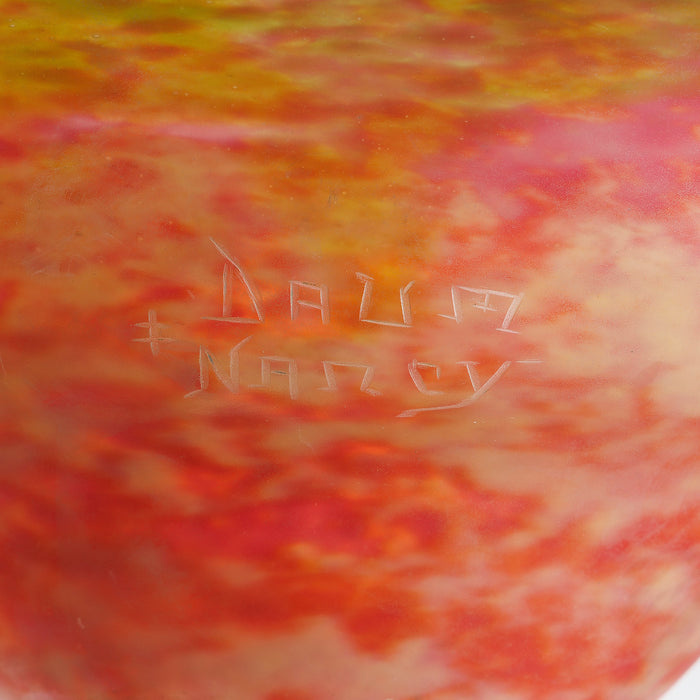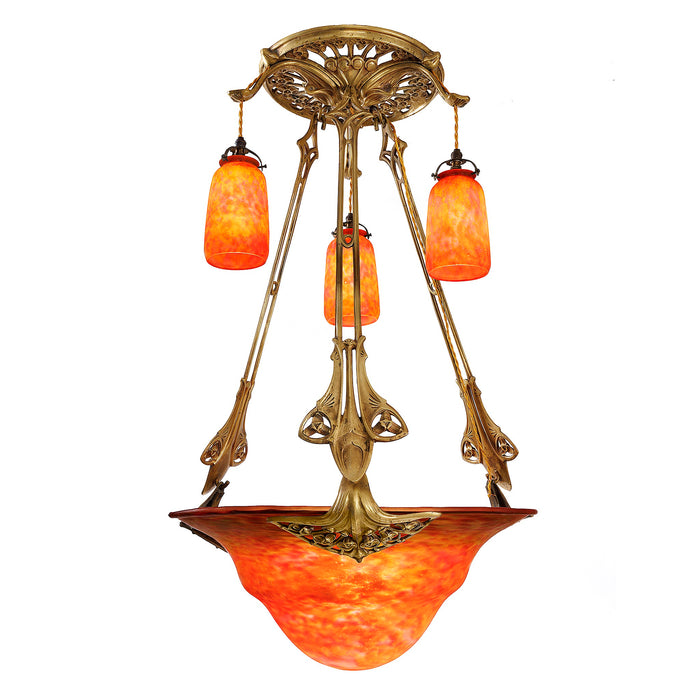
Louis Majorelle and Daum Nancy "Flèche d'eau" Chandelier
$75,000
Louis Majorelle’s and Daum’s “Flèche d'eau” Chandelier marks a unification of late neoclassical sensibilities and art nouveau aesthetics. The “Flèche d'eau,” or arrowhead, was one of the favored flowers of the Ecole de Nancy, as it grew in abundance throughout the local river Meurthe. Its leaves remained submerged in the frothing rapids of river bends, forming long ribbons in the deep waters. Majorelle transformed the plant’s flowers, buds, and leaves into elaborate gilt mounts that gently cradle four marmoreal glass shades. The shade mimics the appearance of Rosso Verona marble, a red marble extracted from the hills surrounding S. Ambrogio di Valpolicella in the province of Verona. The stone-like effect was produced using the Intercalaire technique, whereby powdered glass was sprinkled between successive layers.
- Product Details
- Curator's Notes
Item #: EL-20946
Artist: Louis Majorelle and Daum Nancy
Country: France
Dimensions: 35.43"height, 21.65" diameter
Materials: Gilt bronze, Glass
Signed: Each shade signed DAUM Nancy at the Cross of Lorraine, in intaglio
Literature: Majorelle - Commercial catalog of the time. An identical model reproduced in this publication (without pagination). - Alastair Duncan - Majorelle - Editions Flammarion, Paris, 1991. Identical model appearing on an archive photograph reproduced on page 212.
The term Intercalaire translates from the French to mean "inserted" and signifies the process of applying two layers of decoration to a piece of glass. The first layer is covered with a glass skin that ultimately provides the surface for the second layer of decoration. The technique was first developed by Eugène Kremer from Meisenthal (1890) in collaboration with Emile Gallé. The art of painting between layers of glass was first patented in
Berlin on February 21, 1896 and in Paris almost a year later on March 23, 1897. Shortly before 1900, the Daum brothers registered a similar kind of decoration that they called décoration intercalaire à grand feu (1899). Charles Schneider, who designed for Daum, had modified the technique to include the application of colored flecks and streaks of enamel paint between layers of glass Before applying the enamel paint onto a piece of glass, the glass had to be completely cooled down. After the enamel application, the glass was then repeatedly overlaid with additional layers and reheated. Because of their magical appearance, vases with intercalaire decoration immediately enjoyed huge success at the Paris World Fair of 1900. However, the steps of recurrent heating and cooling down of the glass required extremely delicate manufacturing procedures and the Daum brothers eventually stopped producing intercalaire vases around 1904.

